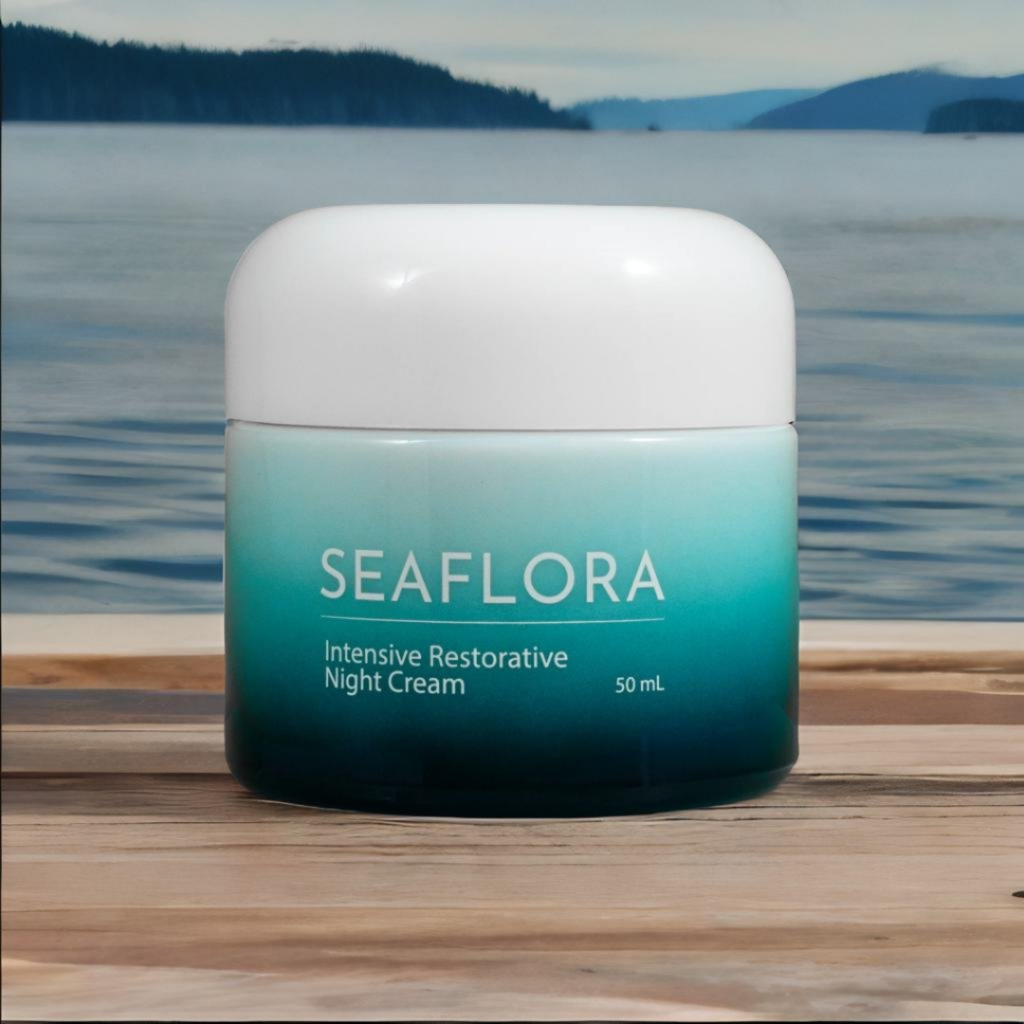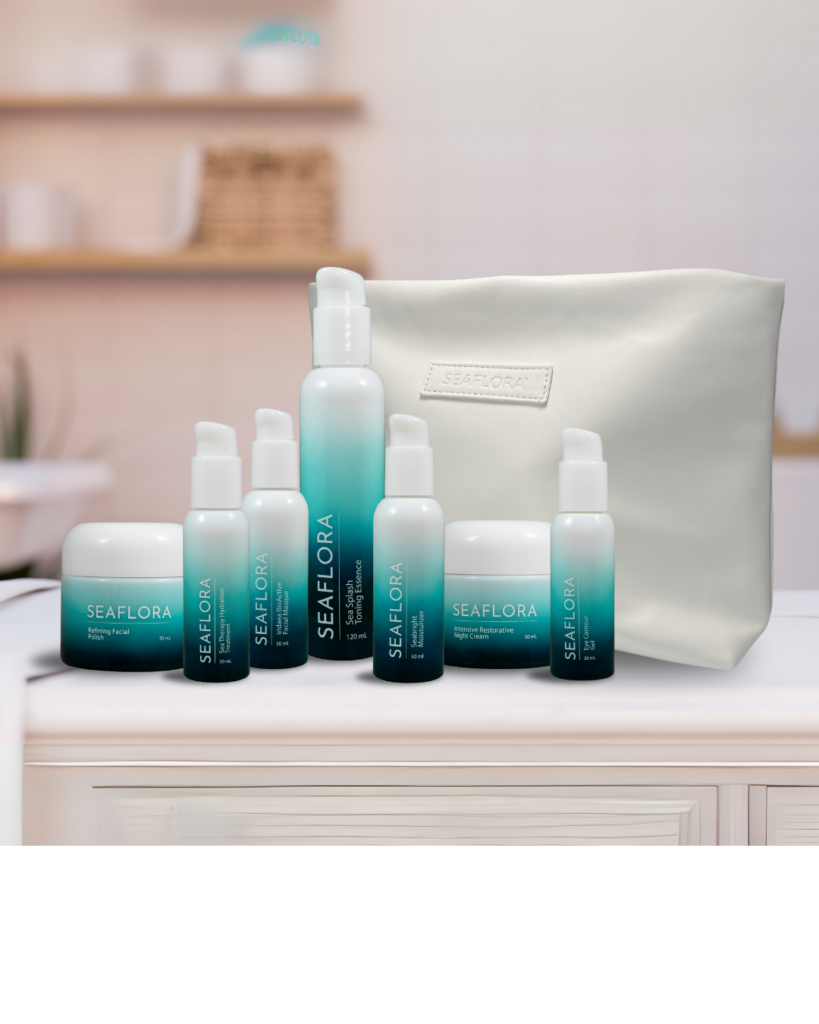Everything You Need To Know About The Matrix Of Skin
Key Takeaways
- Elastin gives your skin its stretch and bounce, helping it snap back into place.
- Collagen acts as the skin’s support system, keeping it firm and wrinkle-free.
- Keratin is the protective shield, safeguarding your skin from external damage.
- Seaweed can boost your skin’s health by supporting the skin matrix.
- Regular face massages with tools like Gua Sha can enhance skin elasticity.
The Holy Trinity Of Skin: Collagen, Elastin and Keratin
Imagine your skin as a living, breathing masterpiece, intricately woven from three remarkable proteins that form the foundation of its beauty and resilience. While collagen often steals the spotlight, it’s the dynamic trio of collagen, elastin, and keratin that truly orchestrates the symphony of youthful, radiant skin. Collagen, the most abundant protein, provides the structural framework, giving skin its strength and plumpness. Elastin, the unsung hero of skin elasticity, allows your face to bounce back from every smile and frown, preserving its youthful contours. Keratin, the protective warrior, forms a resilient barrier against environmental assaults, safeguarding your skin’s precious hydration. Together, these proteins create a complex matrix that not only supports your skin but also tells the story of your life’s experiences. Understanding the interplay between these three essential components is crucial for anyone seeking to unlock the secrets of timeless beauty and optimal skin health.
Understanding Elastin: The Skin’s Flexibility Factor
Elastin is like the unsung hero of our skin, quietly doing its job to keep everything stretchy and bouncy. Imagine your skin as a rubber band. Elastin is what makes it snap back into place after you stretch it. Without enough elastin, your skin might start to sag or wrinkle, especially after all those years of smiling and squinting.
What Does Elastin Do?
- Elasticity and Resilience: Elastin is essential for skin elasticity, allowing it to bounce back and remain flexible during facial movements like smiling and squinting. It’s like a built-in support system that keeps your skin in shape.
- Youthful Appearance: As we age, elastin levels drop, making skin less able to spring back. This is why older skin tends to sag and wrinkle more easily.
- Support for Other Proteins: Elastin works closely with collagen and keratin. While collagen provides structure, elastin gives skin its flexibility, and keratin offers protection.
How to Support Elastin in Your Skin
- Diet: Eating foods rich in antioxidants and healthy fats can support elastin production. Think berries, nuts, and fish.
- Skincare Products: Look for creams and serums containing ingredients that boost elastin, like peptides or retinol.
- Avoiding Damage: Protect your skin from UV rays and pollution, which can break down elastin over time.
Keeping your skin’s elastin healthy is like maintaining the springs in a mattress. If they wear out, the whole thing sags. So, give your skin the care it needs to stay firm and flexible.
Understanding elastin’s role is key to maintaining a youthful, vibrant appearance. By focusing on habits that support elastin health, you can help your skin stay resilient and supple for years to come.
Collagen: The Skin’s Support System
Collagen is like the scaffolding of your skin, holding everything up and keeping it firm and smooth. As we age, this support system starts to weaken. Collagen levels naturally decrease by about 1% per year once you hit your mid-20s, which can lead to sagging and wrinkles. The good news? There are ways to maintain and even boost your collagen levels.
Ways to Boost Collagen
- Collagen Supplements: These can be a game-changer. Hydrolyzed collagen peptides are known to promote your body’s natural collagen production, improving skin elasticity and density. But remember, not all supplements are created equal. Go for high-quality options.
- Retinol: This is a favorite among dermatologists. Retinol speeds up skin cell turnover, leading to healthier skin cells that can produce more collagen. It’s a must-have for reducing fine lines and wrinkles.
- LED Light Therapy: Using red light therapy devices can increase collagen density. Studies show improvements in skin tone and smoothness with regular use.
- Microneedling: This in-office treatment involves tiny needle pokes that create controlled skin trauma. As the skin heals, it produces more collagen, helping to tighten and firm up the skin.
- Prioritize Antioxidants: Antioxidants are crucial for fighting free radicals, which can damage skin cells and accelerate aging. Incorporate vitamins C and E into your skincare routine to help support collagen production.
Collagen is essential for maintaining the skin’s support system; its absence makes the skin more susceptible to external stressors, resulting in increased signs of aging. Learn more about collagen’s role in skin health.
By focusing on these methods, you can help your skin maintain its youthful structure and keep those fine lines at bay. It’s not just about looking good—it’s about feeling confident in your own skin.
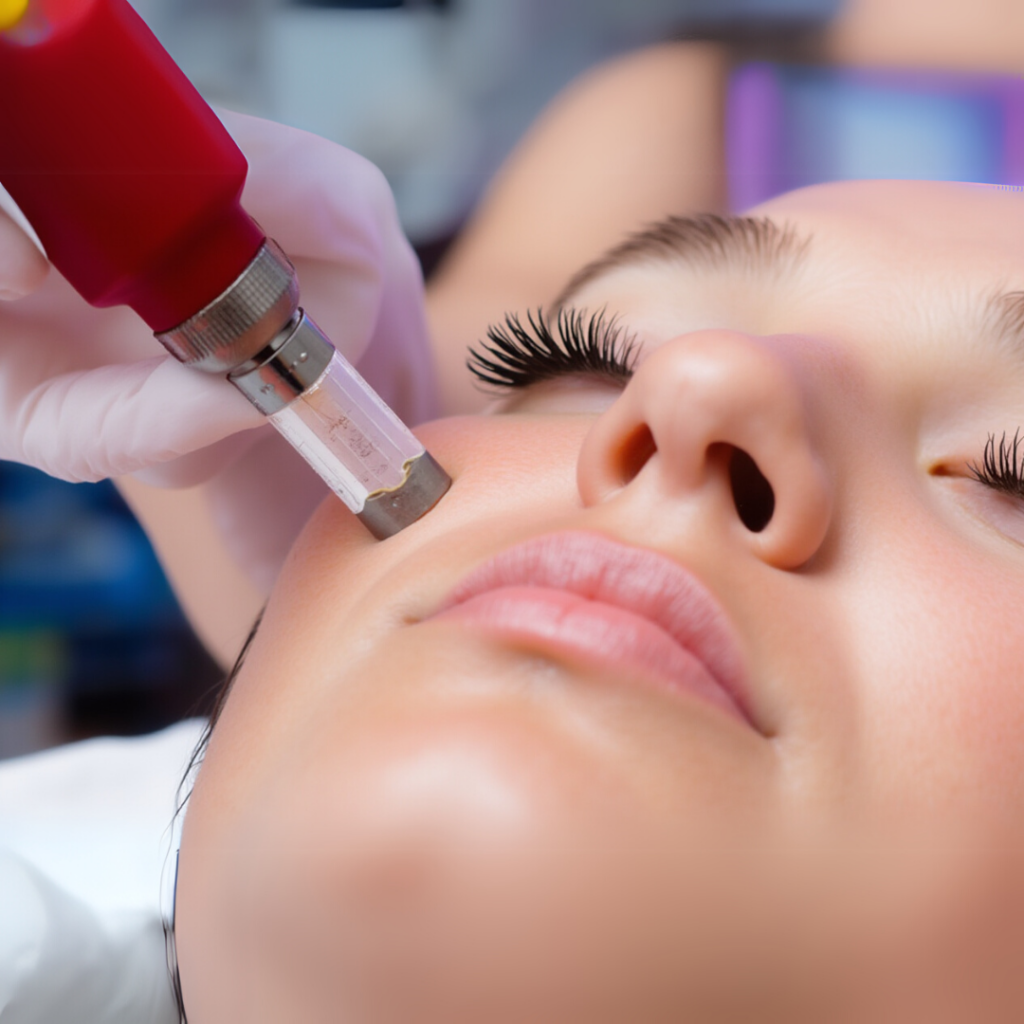
Microneedling and LED light therapy are skincare treatments designed to transform your complexion. Microneedling uses tiny needles to create microscopic skin punctures, stimulating natural collagen. LED light therapy complements this by using specific light wavelengths to target skin concerns: blue light fights acne-causing bacteria, while red light promotes collagen production.
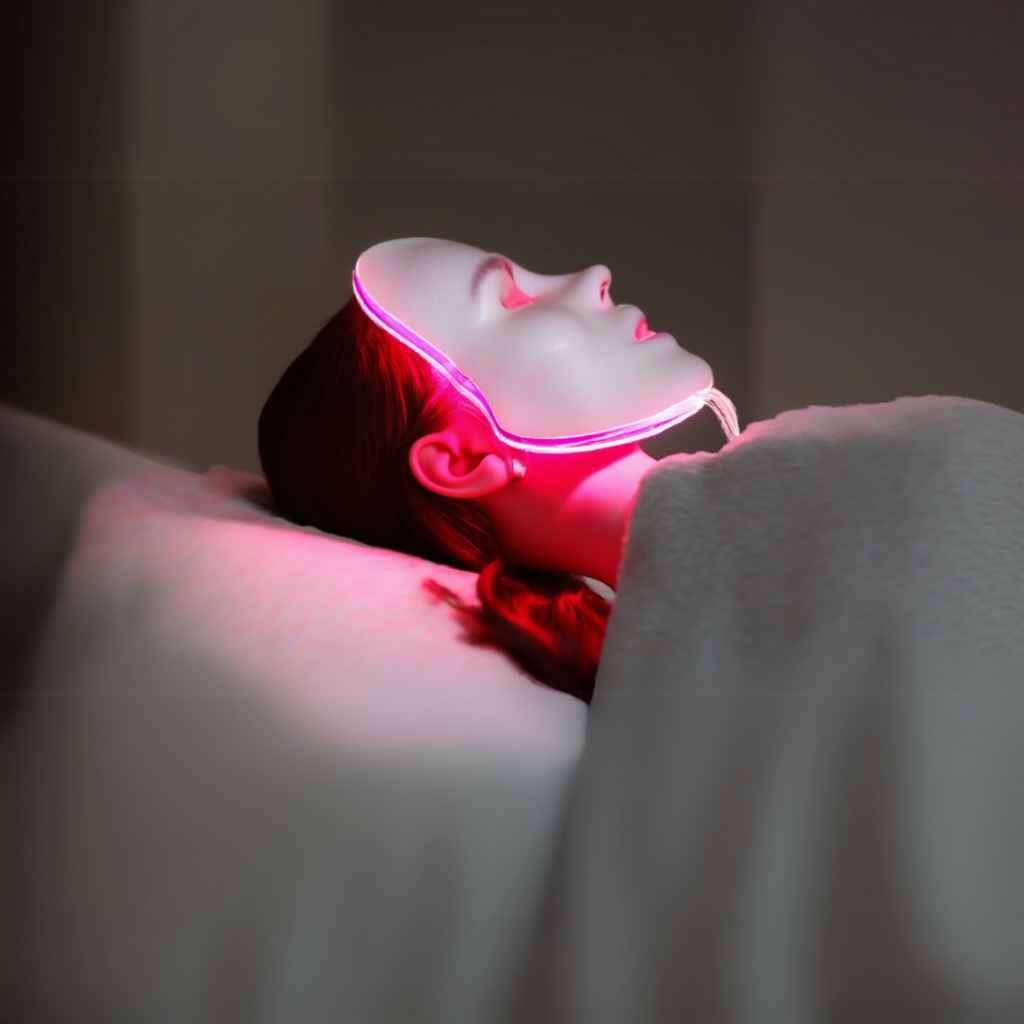
Peptides in Collagen
Peptides are like the unsung heroes of skincare. They’re these tiny chains of amino acids, and they play a big role in keeping your skin looking fresh and youthful. Think of them as the little messengers that tell your skin to produce more collagen. And why is collagen so important? Well, it’s what gives your skin that firm, plump look that everyone is after.
So, what do these peptides actually do? Here’s a quick rundown:
- Boost Collagen Production: As we get older, our skin naturally starts to lose collagen, which can lead to wrinkles and sagging. Peptides help trigger your skin to produce more collagen, which can help bring back some of that lost firmness.
- Improve Skin Elasticity: Not only do peptides help with collagen, but they also improve the skin’s elasticity. This means fewer fine lines and a smoother appearance overall.
- Strengthen Skin Barrier: Peptides can also enhance your skin barrier, which is crucial for keeping moisture in and harmful stuff out. A strong barrier means your skin stays hydrated and protected.
- Enhance Skin Texture and Tone: By encouraging cell turnover, peptides can improve the overall texture of your skin, making it look more even and bright.
- Soothe and Repair: Thanks to their anti-inflammatory properties, peptides can help calm irritated skin and speed up the healing process. Whether it’s acne scars or sun damage, peptides can help your skin recover faster.
Peptides aren’t just a fad in skincare; they’re a game-changer. By incorporating peptides into your routine, you’re giving your skin the tools it needs to stay youthful and resilient.
For those dealing with gastrointestinal issues, supplementing with collagen peptides can also offer relief. This can be beneficial for conditions like leaky gut syndrome or IBS, making peptides not only a skincare powerhouse but also a holistic health ally.
Amino Acids in Peptides and what specific one?
Peptides, those tiny protein fragments, are made up of amino acids. They play a huge role in keeping our skin looking youthful and vibrant. But what exactly are these amino acids, and why are they so important?
The Building Blocks of Peptides
Amino acids are like the alphabet of proteins. They form chains that create peptides, which then build proteins like collagen and elastin. These proteins are essential for maintaining the skin’s structure and elasticity. Without them, our skin would lose its firmness and start sagging.
Key Amino Acids in Skincare
When it comes to skincare, certain amino acids are more beneficial than others. Here are a few that stand out:
- Glycine: Known for its role in collagen production, glycine helps keep the skin firm and plump.
- Proline: This amino acid is crucial for maintaining skin elasticity.
- Lysine: Often found in anti-aging products, lysine supports skin repair and renewal.
The Star Amino Acid: Glycine
Among the various amino acids, glycine deserves special mention. It’s a major component of collagen, making up about a third of its structure. Glycine not only aids in collagen synthesis but also helps protect skin from oxidative stress. This makes it a key player in any anti-aging skincare routine.
Peptides, with their amino acid building blocks, are like little powerhouses for the skin. They help reduce wrinkles, improve texture, and even soothe irritation. Incorporating peptides into your skincare routine can lead to healthier, more resilient skin.
In conclusion, understanding the role of amino acids in peptides can help you make informed choices about your skincare products. Peptides are amino acids that play a crucial role in reducing wrinkles and protecting the skin, making them a valuable addition to any skincare regimen.
Keratin: The Protective Protein
Keratin is like the unsung hero of proteins when it comes to skin, hair, and nails. It’s the tough stuff that keeps everything together, offering protection and resilience. You know how your hair can withstand a bit of tugging and your nails don’t just crumble at the slightest touch? That’s keratin at work.
The Role of Keratin
Keratin is a structural protein, which means it’s all about providing support and strength. It’s found in your skin, hair, and nails, creating a barrier that’s not just protective but also flexible. This protein is what helps your skin fend off environmental damage and keeps your hair and nails strong and healthy.
Benefits of Keratin
Here’s a quick rundown of what keratin does:
- Strengthens Hair: Keratin helps in reducing hair breakage and promotes a shiny, smooth appearance.
- Protects Skin: Acts as a barrier against harmful substances and environmental factors.
- Boosts Nail Health: Prevents nails from becoming brittle and breaking easily.
How to Support Keratin Production
Supporting your body’s natural keratin production isn’t too complicated:
- Eat Right: Foods high in protein, like eggs and fish, can boost keratin levels.
- Use Keratin-Infused Products: Shampoos and conditioners with keratin can help maintain hair health.
- Avoid Over-Styling: Excessive heat and chemical treatments can deplete keratin, so keep styling to a minimum.
Taking care of your keratin levels can make a noticeable difference in how your hair, skin, and nails look and feel. It’s all about giving your body the right tools to keep everything in top shape.
For more on how keratin is vital in our daily lives, especially in epithelial tissues, explore further insights into its cellular functions and benefits.
The Skin’s Matrix: Elastin, Collagen, and Keratin
Ever wonder how your skin manages to stay firm yet stretchy at the same time? It’s all thanks to the teamwork of elastin, collagen, and keratin. These three proteins are like the dream team for your skin, each bringing something unique to the table.
The Role of Elastin
Elastin is like the rubber band of your skin. It gives your skin the ability to stretch and then snap back into place. This is why, when you’re young, your skin bounces back so easily after a pinch. As you age, though, elastin production decreases, making skin less elastic.
Collagen’s Contribution
Think of collagen as the scaffolding that holds everything up. It’s the most abundant protein in your body and provides structure to your skin, keeping it firm and plump. Over time, collagen breaks down, leading to wrinkles and sagging.
Keratin as the Protector
Keratin is the tough protein that forms a barrier on the surface of your skin. It’s what makes your skin waterproof and resilient, protecting you from the outside world. Keratin is also found in your hair and nails, adding strength and durability.
How They Work Together
These proteins don’t just work in isolation. Together, they create a balanced environment for your skin, ensuring it remains strong, flexible, and protected. When elastin and collagen are in harmony, your skin stays youthful and resilient. Keratin adds that extra layer of defense, making sure everything underneath stays safe.
When elastin, collagen, and keratin are in sync, your skin feels like it’s at its best—firm, elastic, and shielded from daily wear and tear.
Maintaining the Balance
To keep this trio functioning well, consider a balanced diet rich in vitamins and minerals. Foods high in vitamin C, like oranges and strawberries, can boost collagen production. Omega-3 fatty acids found in fish can help maintain elastin levels. And don’t forget about zinc, which is crucial for keratin production.
- Eat a balanced diet: Focus on foods that support skin health.
- Stay hydrated: Water helps maintain skin elasticity.
- Use skincare products wisely: Look for ingredients such as Seaweed that support these proteins.
Understanding how elastin, collagen, and keratin work together can help you make informed choices about skincare and lifestyle habits that promote healthy, vibrant skin.
Seaweed’s Role in Supporting Skin Matrix Health
Seaweed, often found in the depths of the ocean, isn’t just for sushi. This marine plant is packed with nutrients that can do wonders for your skin. Rich in vitamins, minerals, and antioxidants, seaweed helps to support the skin’s structural integrity and maintain its youthful appearance.
Nutritional Powerhouse
- Vitamins and Minerals: Seaweed is loaded with vitamins like A, C, E, and K, which are essential for skin health. These vitamins help to protect the skin from environmental damage and promote healing.
- Antioxidants: The antioxidants in seaweed fight free radicals, which can lead to premature aging. This helps in reducing fine lines and wrinkles, keeping the skin looking youthful.
- Omega-3 Fatty Acids: These are known to nourish the skin, keeping it supple and moisturized.
Benefits for Skin Elasticity
Seaweed is also a great source of natural compounds that can improve skin elasticity. Compounds like fucoidan help to boost collagen production, which is crucial for maintaining the skin’s firmness and elasticity.
Hydration and Moisture Retention
- Moisture Magnet: Seaweed can draw moisture to the skin, making it a great ingredient for hydration. It helps to lock in moisture, keeping the skin soft and smooth.
- Barrier Support: By strengthening the skin’s natural barrier, seaweed prevents moisture loss and protects against environmental stressors.
Adding seaweed to your skincare routine could be a game-changer. It supports the skin’s matrix, boosts elasticity, and keeps the skin hydrated, making it a versatile ingredient for healthy skin.
If you’re looking to enhance your skin’s elasticity, consider trying a Seaweed Night Cream that stimulates collagen and elastin. This cream not only boosts firmness but also addresses dryness and flakiness, promoting a smoother and more hydrated complexion.
Mimetic Muscles: The face
Our faces are like a canvas of expression, thanks to the intricate network of mimetic muscles. These muscles, small yet mighty, are responsible for the myriad of expressions that convey our emotions without uttering a word. Understanding these muscles can help us appreciate how our skin moves and ages.
The Role of Mimetic Muscles
Mimetic muscles are unique because they attach directly to the skin, unlike other muscles that connect to bones. This direct connection allows them to pull and stretch the skin, creating expressions like smiles, frowns, and everything in between. Over time, this repeated movement can lead to the formation of fine lines and wrinkles.
How Mimetic Muscles Affect Skin Aging
As we age, the skin’s elasticity diminishes, and the constant motion from these muscles can deepen lines and wrinkles. This is where retinoids enhance skin health by stimulating collagen production and improving elasticity. They work by removing damaged elastin fibers and promoting the creation of new ones, helping to maintain a youthful appearance.
Tips for Caring for Mimetic Muscles
- Facial Exercises: Just like any other muscle in your body, facial muscles can benefit from regular exercise. Simple exercises can help tone these muscles and potentially reduce the appearance of wrinkles.
- Gentle Massages: Incorporating facial massages into your routine can improve circulation and relax these muscles, reducing tension and promoting a smoother complexion.
- Mindful Expressions: Being aware of repetitive expressions can help minimize unnecessary strain on your facial muscles, potentially slowing down the formation of lines.
The dance of our facial muscles is a beautiful symphony of expressions. While they tell our stories, they also remind us of the passage of time. Embracing their role, while caring for our skin, can help us age gracefully.
Gua Sha Mastery: The Revolutionary Facial Massage Technique for Ageless Beauty
Facial massage isn’t just a luxury; it’s a practical step in your skincare routine. Regular face massages can boost circulation and help with lymphatic drainage. Enter Gua Sha, a tool that’s been around for centuries but is making a big comeback in skincare circles.
Benefits of Using Gua Sha
- Improves Circulation: Just like any massage, using Gua Sha can enhance blood flow, which is great for your skin’s health.
- Reduces Puffiness: By promoting lymphatic drainage, Gua Sha helps to reduce swelling and puffiness, especially around the eyes.
- Relieves Tension: Many people hold tension in their face without realizing it. Gua Sha can help release that tension, which might even reduce the appearance of fine lines over time.
How to Use Gua Sha
- Start with a Clean Face: Before you begin, make sure your skin is clean and moisturized.
- Use Gentle Strokes: Hold your Gua Sha tool at a 15-degree angle and gently glide it across your skin.
- Focus on Key Areas: Pay attention to areas where you feel tension or see puffiness, like your jawline, cheekbones, and forehead.
Consistency is key. Incorporating Gua Sha into your daily routine can lead to noticeable improvements in your skin’s texture and tone.
Things to Keep in Mind
- Be Gentle: Pressing too hard can cause bruising. The goal is to relax your muscles, not to hurt them.
- Stay Hydrated: Drinking water after a massage can help flush out toxins.
- Choose the Right Tool: Gua Sha tools come in different shapes and materials. Find one that feels comfortable for you.
Using Gua Sha might seem a bit trendy, but it’s rooted in traditional practices that have stood the test of time. Give it a try and see how it fits into your skincare routine. It’s a simple, mindful way to care for your skin and yourself.
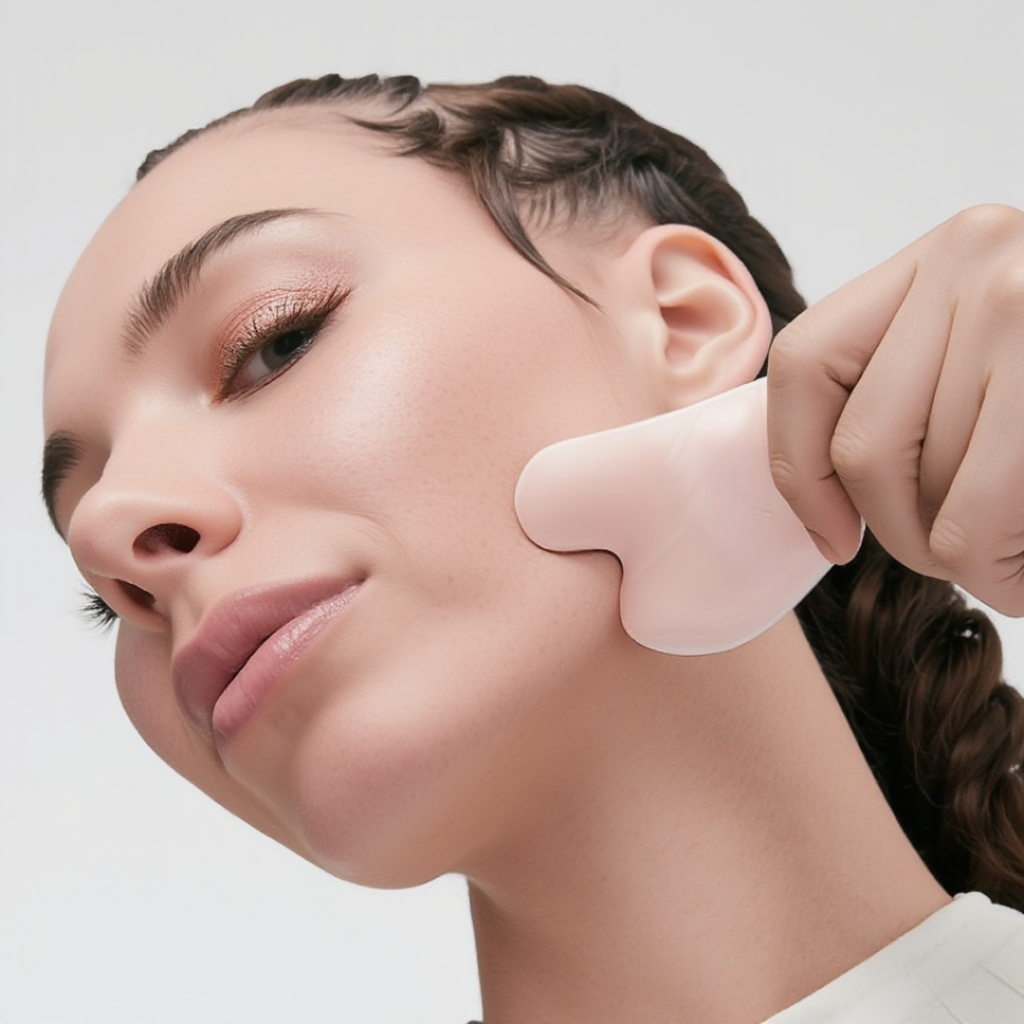
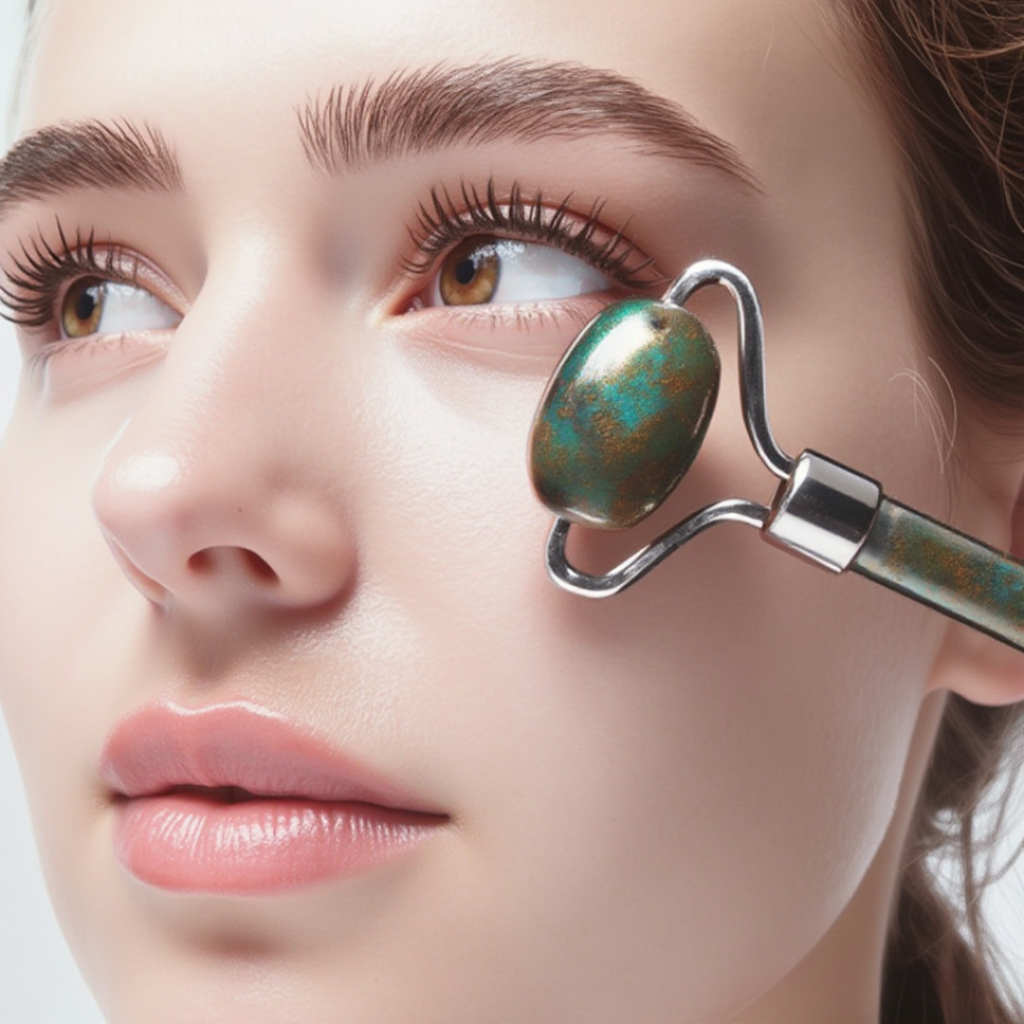
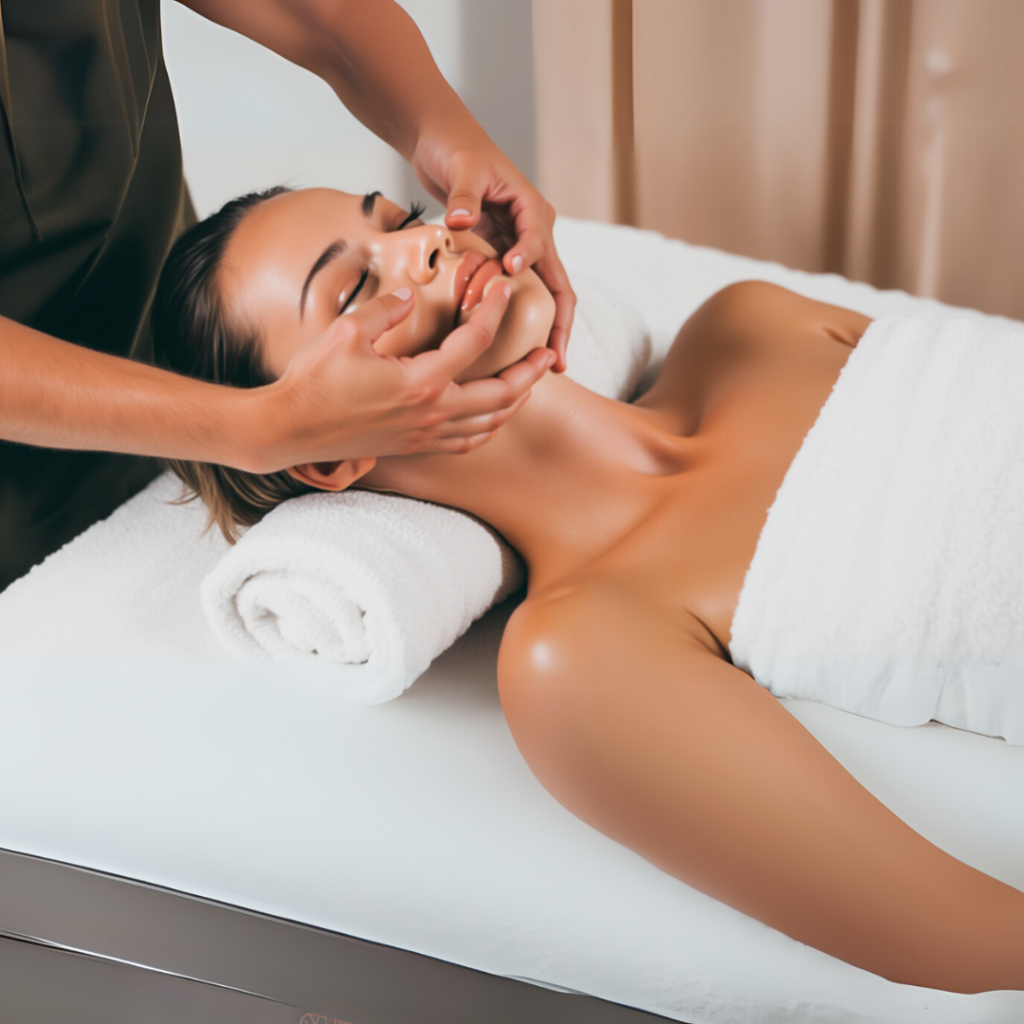
Conclusion
As we wrap up our exploration of skin health, it’s clear that elastin, collagen, and keratin each play unique roles in maintaining our skin’s vitality. Elastin provides the flexibility we need, allowing our skin to snap back into place after stretching. Meanwhile, collagen acts as the sturdy framework, keeping everything in place and giving our skin its strength and structure. And let’s not forget keratin, the protective shield that guards against environmental damage.
Key Takeaways:
- Elastin is crucial for skin elasticity and resilience.
- Collagen supports skin firmness and reduces the appearance of wrinkles.
- Keratin offers a protective barrier against external stressors.
By understanding how these proteins work together, we can better appreciate the complexity of our skin’s architecture. Incorporating products or treatments that enhance these components can lead to healthier, more vibrant skin.
Taking care of your skin isn’t just about looking good; it’s about feeling confident and comfortable in your own skin. Remember, a consistent skincare routine that focuses on these essential proteins can make all the difference in achieving the skin you’ve always wanted.
Frequently Asked Questions
What is elastin and why is it important for skin?
Elastin is a stretchy protein found in the skin that helps it return to its original shape after stretching or contracting. It’s important because it keeps the skin flexible and resilient.
How does collagen benefit the skin?
Collagen provides structure and support to the skin, helping it stay firm and smooth. It reduces the appearance of wrinkles and fine lines.
What role do peptides play in skin health?
Peptides are small proteins that act like messengers, telling the skin to make more collagen. This helps the skin stay firm and reduces wrinkles.
Why is keratin important for skin protection?
Keratin is a protein that helps protect the skin from damage. It forms a barrier that keeps moisture in and harmful stuff out.
How can seaweed help with skin health?
Seaweed is rich in vitamins and minerals that support skin health. It can help improve skin texture and keep it hydrated.
What is the benefit of facial massage with tools like Gua Sha?
Facial massage with tools like Gua Sha can improve blood flow, relax muscles, and help the skin look more refreshed and youthful.

